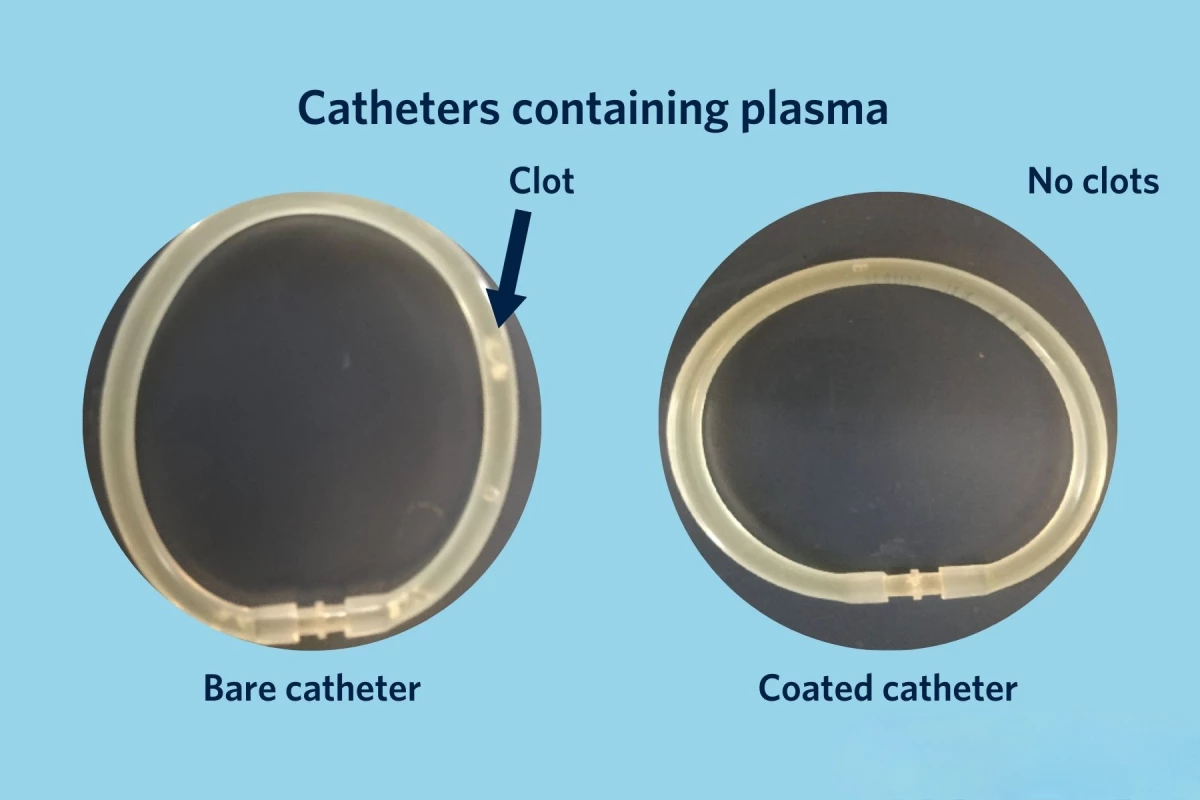When a patient's blood flows through catheters, stents or other medical devices, there's always a risk that harmful clots may form. An experimental new bio-inspired coating could keep that from happening, without the use of blood-thinning drugs.
Any time that blood comes into contact with a non-bodily material, protective proteins in the plasma are triggered to isolate that material by forming a clot around it. If that clot should form in something like a dialysis machine, it could hamper the treatment or even come loose and cause a stroke in the patient.
In order to keep this from happening, doctors often administer blood-thinning drugs that stop the blood from coagulating. Such medications have negative side effects, however, including the risk of uncontrollable bleeding.
As a result, some scientists have developed anti-fouling coatings that repel the plasma proteins, keeping them from coming into contact with underlying synthetic surfaces. That said, according to Dr. Jayachandran Kizhakkedathu from Canada's University of British Columbia, such coatings may still allow clots to form in some circumstances.
With this problem in mind, Kizhakkedathu and colleagues created a "selective protein interacting" (SPI) coating, which works like the natural inner lining of blood vessels.
The polymer-based material contains "surface-conjugated sheltered positively charged macromolecules" (SPCMs), which actually interact with a plasma protein known as factor XII. In a nutshell, although the molecules do engage the protein, they keep it from transforming into its blood-coagulating factor XIIa form.
In tests performed on human blood deposited on glass surfaces, and on shunts placed in rabbits' jugular veins, the SPI coating was found to drastically delay the formation of blood clots. On coated glass, for instance, the blood took over an hour to clot, as opposed to just 10 minutes on uncoated glass.
And importantly, once the blood was no longer in contact with the coating, it was once again able to clot normally.
"This discovery could be a transformative step in the development of safer medical devices," says Kizhakkedathu. "By designing a coating that mimics the body’s natural approach to preventing clots, we’ve created a solution that could dramatically reduce the need for risky blood thinners before and after patients use these devices."
Further research is required to ascertain how the coating interacts with other blood proteins and cells. The study is described in a paper that was recently published in the journal Nature Materials.
Source: University of British Columbia




